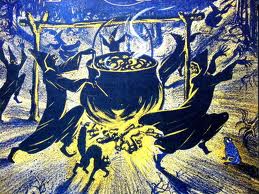 Over 2,000 years ago, the Celts, who lived in what is now Ireland, began a haunting tradition. November 1st was considered New Year’s Day for the Celts, and they also celebrated the day before. On October 31st (or Samhain), the worlds of the dead and the living became one as the dead returned to earth, and the Celtic priests announced predictions about the future.
Over 2,000 years ago, the Celts, who lived in what is now Ireland, began a haunting tradition. November 1st was considered New Year’s Day for the Celts, and they also celebrated the day before. On October 31st (or Samhain), the worlds of the dead and the living became one as the dead returned to earth, and the Celtic priests announced predictions about the future.
To celebrate this day, Celts wore costumes and attempted to tell each other’s fortunes. However, when the Romans conquered this territory, the Roman holiday of Feralia (a holiday commemorating the dead) was combined with the Celtic Samhain. After the Romans, Christian influence changed the celebration once again. Pope Boniface IV declared November 1st All Saints’ Day to honor saints and martyrs, apparently in an attempt to replace Samhain.
 All Saint’s Day was also referred to as All-hallows, or All-hallowmas from the Middle English term for All Saint’s Day. Eventually, the eve of this day was called All-hallows Eve, a name that would one day turn into Halloween. Eventually, All Souls’ Day wa
All Saint’s Day was also referred to as All-hallows, or All-hallowmas from the Middle English term for All Saint’s Day. Eventually, the eve of this day was called All-hallows Eve, a name that would one day turn into Halloween. Eventually, All Souls’ Day wa s added on November 2nd, and the three days together became known as Hallowmas.
s added on November 2nd, and the three days together became known as Hallowmas.
When Europeans came to America, they brought their Halloween traditions along. These traditions came together with the celebrations of American Indians and other ethnic groups, creating a uniquely American version of the holiday. Early celebrations were usually public events full of dancing, singing
, and storytelling.
Late-19th-century immigrants brought new twists to the Halloween tradition. These immigrants began dressing up on Halloween and going house to house asking for much-needed food or money, which eventually evolved into modern-day trick-or-treating. The Irish brought along jack-o-lanterns, which originated as coals or small candles placed inside turnips to ward off evil spirits. Once the Irish discovered that the pumpkins were easier to carve, the tradition began.
By the 1920s and 30s, Halloween became a community celebration with parades and parties. However, vandalism also became increasingly popular. In the 1950s, Halloween celebrations moved from the community to the classroom, and the popular tradition of trick-or-treating began to take hold, with candy used to bribe vandals to stop performing “tricks.”
Witches became associated with Halloween due to a European belief that witches would gather each year to celebrate and worship the devil. It was also believed that if one wanted to meet a witch, he should wear his clothes inside-out and walk backward on Halloween night, and a witch would appear at midnight!
Please visit our collectibles store for some very nice Halloween collectibles and gifts